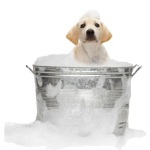
- Home
- Air Pollutants
- 10 Easy Ways To Improve Indoor Air Quality
Our News & Updates
10 Easy Ways To Improve Indoor Air Quality

As humans, we consume more air than any other substance we put into our bodies. There’s an old saying that people can go roughly three weeks without consuming food, we can go roughly three days without consuming water, but only about three minutes without breathing air; so it goes without saying that we would want to keep the air we breathe as healthy as possible and optimized for our comfort and well-being. We know pollution, smog and ash have been known to trigger heart attacks, strokes, asthma and early deaths……this is enought to make us want to close our doors and windows, and barricade ourselves indoors.
But wait….the air quality in our family rooms might be much worse than what we find outside. In both rural and industrialized areas, indoor levels of some contaminants can be 2 to 50 times HIGHER than what we find outdoors. So how can we keep the air in our homes healthy? Here are 10 easy ways to help improve indoor air quality and reduce contaminants.
 Bring the outdoors in: Bringing live plants into your home can do an excellent job of filtering out VOC’s (volatile organic compounds) out of your indoor air. Not to mention that plans also naturally extract carbon dioxide from the environment and exchange it with fresh oxygen. Mother Nature couldn’t have been more generous to us.
Bring the outdoors in: Bringing live plants into your home can do an excellent job of filtering out VOC’s (volatile organic compounds) out of your indoor air. Not to mention that plans also naturally extract carbon dioxide from the environment and exchange it with fresh oxygen. Mother Nature couldn’t have been more generous to us.
Keep it clean: Very few people enjoy cleaning their home, and it’s very tempting to put off household chores. But cleaning regularly can help reduce irritants, dust, allergens, pet dander and PBDEs inside your environment. Vacuuming, mopping the floors and putting floor mats at every door can also reduce the amount of dirt, pesticides and pollutants that are allowed inside.
 Keep it green: When cleaning, it’s important to keep in mind that while removing some contaminants from your home, you shouldn’t be putting others back in. Although they may smell great and we associate pine and lemon scented products with the feeling of “clean”, these scented cleaning products are often a leading source of VOC’s within the home and can wreak havoc on our indoor air quality. Look for nontoxic, nonaerosol and unscented products to clean your home. Synthetic fragrances and air fresheners emit tons of different chemicals into the air so go natural and keep it green.
Keep it green: When cleaning, it’s important to keep in mind that while removing some contaminants from your home, you shouldn’t be putting others back in. Although they may smell great and we associate pine and lemon scented products with the feeling of “clean”, these scented cleaning products are often a leading source of VOC’s within the home and can wreak havoc on our indoor air quality. Look for nontoxic, nonaerosol and unscented products to clean your home. Synthetic fragrances and air fresheners emit tons of different chemicals into the air so go natural and keep it green.
Enforce a “NO SMOKE” rule: Cigarettes, candles and fireplaces (wood burning) can all release indoor air pollutants that can greatly impact our indoor air quality and trigger substantial health problems. Second hand smoke from cigarettes is likely one of the most important aspects of indoor air pollution to try and minimize. Keep the smoke outside, and ask guests to do the same. Use only unscented and nontoxic candles inside and if burning wood in a fireplace, ensure it is cured or dried and not pressure treated.
Don’t forget the filters: A great way to help minimize airborne contaminants is to regularly inspect and replace the filter in your HVAC system. Electronic air cleaners and electrostatic filters are also an excellent option. These help to capture more particles than regular filters and minimize the amount of particulates in your indoor air.
 Let the fresh air in: Even in the winter it is wise to open the windows and allow some fresh air in. Ceiling fans can also help to circulate the air and exhaust fans can help minimize odors when cooking. Allowing fresh air in can help dilute Carbon Dioxide levels and get rid of that “stuffy” feeling we get when were cooped up inside.
Let the fresh air in: Even in the winter it is wise to open the windows and allow some fresh air in. Ceiling fans can also help to circulate the air and exhaust fans can help minimize odors when cooking. Allowing fresh air in can help dilute Carbon Dioxide levels and get rid of that “stuffy” feeling we get when were cooped up inside.
Keep moisture to a minimum: Mold and mildew love a moist or damp home. Increased humidity levels can be a huge contributing factor to mold growth so its important to know how to control moisture in your home . Keep humidity levels between 30-50% for optimal comfort and don’t forget to turn on the ventilation fan in the bathroom. Dehumidifiers can really help, especially in the summer. If you have a leak, flood or spill, dry it up immediately and remove any organic materials that become saturated and stained. If you have an indoor spa or jacuzzi tub, ensure the the room where the spa is situated is properly fitted with moisture resistant materials and properly insulated. Spa baths may also be prone to bacteria; if unsure, look towards specialized legionella testing and sampling for answers.
Watch out for lead and asbestos: Older homes were often painted with lead paint which can be found in household dust. If you know you have lead indoors, keep your home free of dust to protect against poisoning. If unsure, have your paint tested, and always make sure to hire an experience contractor to remove wall material that has been contaminated with lead. Asbestos containing materials are also a concern in older homes. Before your renovate or disturb and materials you suspect contain asbestos, make sure you conduct professional asbestos testing first and again, use an experience and certified asbestos removal expert to remediate the area
Know your radon risk: Radon is a colorless and odorless gas that can significantly raise the risk of developing lung cancer. Both old and new homes can be susceptible. Radon is produced naturally from the breakdown of uranium in the ground and sold and can enter your home from cracks in the foundation, floor drains and sump pump cavities. Test for radon to help reduce your risk and know your indoor levels.
 Brush your best friend outdoors: We all know how important pets are to our well-being. Did you know that pet ownership can help reduce blood pressure, anxiety and keep us calm? As much as they give to us, it’s important to always member how our indoor air quality can not only impact our health, but also the health of our furry four legged family members. By keeping your pet brushing outdoors, you help reduce pet hair and dander indoors. Regular bathing and grooming of your pets can also reduce the amount of fur and dander floating in the air within your home. Frequently washing your pets bedding in hot water will also help minimize indoor airborne contaminants.
Brush your best friend outdoors: We all know how important pets are to our well-being. Did you know that pet ownership can help reduce blood pressure, anxiety and keep us calm? As much as they give to us, it’s important to always member how our indoor air quality can not only impact our health, but also the health of our furry four legged family members. By keeping your pet brushing outdoors, you help reduce pet hair and dander indoors. Regular bathing and grooming of your pets can also reduce the amount of fur and dander floating in the air within your home. Frequently washing your pets bedding in hot water will also help minimize indoor airborne contaminants.
Implementing these easy ways to improve indoor air quality can help you breathe a little easier while also helping to ensure the health and safety of your loved ones. If unsure of your level of contaminants or risk, professional indoor air quality testing can offer an excellent return on your testing investment by giving you the information you need on where to target your indoor air improvement efforts.
About Admin
Recent Posts
- Formaldehyde: Is Your Flooring Making You Sick?
- Foods That Help Relieve Allergies
- Indoor Air Quality – What To Look For When Buying A House
- Springcheck
- What makes a ‘green’ home
- Allergies and the Effects of Weather
- 7 Unknown Things That Cause Allergies
- Tips To Combat Indoor Air Pollution
- The Benefits of Using Air Filters
- Ways To Fight Winter Allergies
- Radon: The Hidden Killer in your home and How To Avoid It
- Carbon Monoxide Awareness
The Air Quality Experts
We hold leading accreditation's including the Occupations Hygiene Association of Ontario, the Ontario Association of Certified Engineering Technicians & Technologists and the International Association of Certified Indoor Air Consultants.
Contact Info
Phone: 1-877-443-7837Email: [email protected]
Recent Posts
Most Popular Posts

QUOTE NOW!
Mold - Bacteria - Radon - Asbestos - Particulates - Carbon Dioxide - Carbon Monoxide - Volatile Organic Compounds and much more!


QUALITY TEST NOW AND

